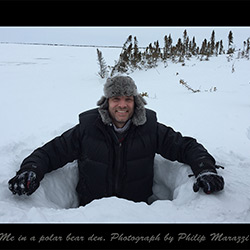 Today I have the pleasure of presenting an interview that comes from Edmonton, Alberta, Canada. Greg Harvey is a talented wildlife photographer and a safari tour leader, who travels the world to capture incredible photographs of wildlife in its natural environment. Greg balances his time running his two small companies, a personal training company, and his wildlife photography business. He also teaches a wildlife photography course and hosts as a safari tour leader. Through his photography, Greg has the ability to capture and convey his personal connection to the natural world.
Today I have the pleasure of presenting an interview that comes from Edmonton, Alberta, Canada. Greg Harvey is a talented wildlife photographer and a safari tour leader, who travels the world to capture incredible photographs of wildlife in its natural environment. Greg balances his time running his two small companies, a personal training company, and his wildlife photography business. He also teaches a wildlife photography course and hosts as a safari tour leader. Through his photography, Greg has the ability to capture and convey his personal connection to the natural world.
Greg, thank you so much for sharing your experiences with us and thank you so much for all your thoughtful responses.
If you would like to learn more about Greg, visit his website. You can also follow him on Twitter.
YOUR BACKGROUND
I was taught the basics of photography by my dad with an old Rollie camera. Of course, there was no such thing as automatic settings on a Rollie so that summer gave me a good base to learn from.
Can you please tell the readers a bit about yourself?
From the time I was 15 I enjoyed photography. After high school, I didn’t pick up a camera again until I was 28. Photography was/still is a nice way to enjoy my surroundings while on holidays. I grew up on a farm and moved out to the city where there was work. I miss the farm so on all of my holiday time I chose/choose wildlife-based holidays on all of my time off. Living in the city, I have always missed the peace and quiet of nature so there was no way I was/am going to go to another city on vacation. Nature is what soothes the soul for me and truly relaxes me.
Where do you call home?
Edmonton, Alberta, Canada.
After browsing through your website, I see that you have built up an extensive collection of wonderful photography. When did you first become interested in photography and how long have you been involved with it?
I was 15 the first time I picked it up. Then as a teenager, I bought a pentax K-1000. As a struggling young adult, I sold that camera so I could pay the rent. I was 25 when my father passed away. He passed on his canon A-1 to me and I started taking pictures again. At 28 I bought my second camera and started getting back into taking pictures. That’s when I started going on wildlife-based vacations with my camera.
Are you formally-taught or self-taught?
Mostly self-taught. I have a lot of professional wildlife photographer friends that I have met on safari over the years. I have learned a lot from them and from spending hours analyzing wildlife photographers’ images.
YOUR DAY TO DAY
I run two small companies. My main business is running a personal training company helping people with their fitness and weight loss. My first clients are at 6 a.m. and my last clients end at 8 p.m. so I have long days. Between clients, I work on my “desk work” of both of my companies.
I started my wildlife photography business in 2007. Since that time I have spent the past 11 years trying different things. At first, I tried selling the odd print from exhibits in business towers. My first exhibit cost me $7000.00 to set up and I sold one unframed print for $195.00. From there I bought my own large format printer to cut down printing costs and to ensure that the finished product had consistency. I started hanging out at a frame shop called Jakes Framing. Jake’s shop is located in Edmonton. He taught me how to stretch canvases properly and how to frame them.
I enjoy editing, printing, and framing images for my clients as well as other photographers and their clients. My biggest focus now is on taking people on safari. I have a great Kenyan safari itinerary and really enjoy showing people the Masai Mara for the first time.
What type of photography shoots do you look forward to?
My favourite days are any day spent with big cat cubs if there are not a lot of people around. Too many people talking and giggling etc. at a sighting and they ruin that connection with nature for me. When I find a sighting of a leopard cub and her mom or a cheetah family and I am fortunate enough not to have many people around at the time, that is the best feeling in nature for me. A close second would be photographing polar bear moms and cubs in Northern Manitoba. You don’t see them often, but when you do, it’s magical.
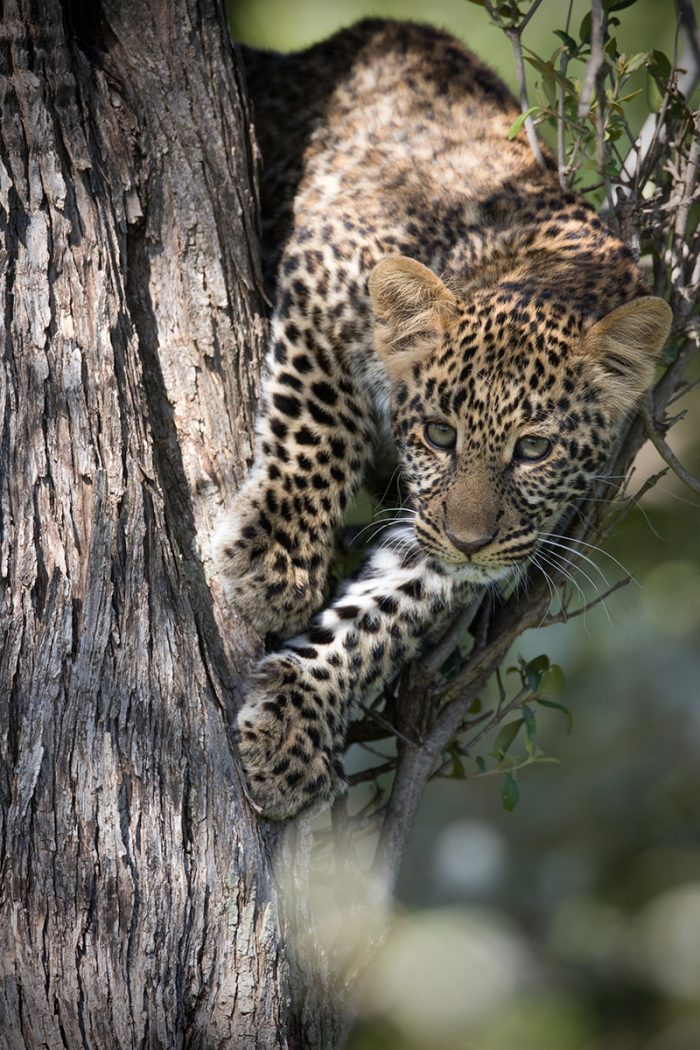
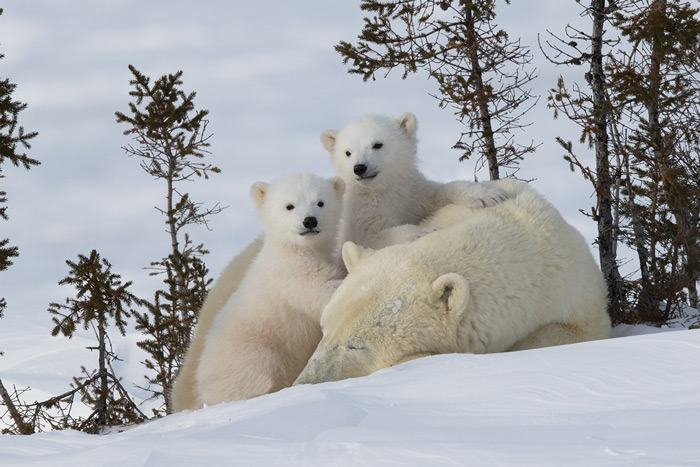
When shooting subjects, what do you find most challenging?
Every sighting is different. Sometimes it is the lack of light or bad background or we might have a great sighting for just a minute or two so a person has to be really prepared. The animal may be relaxed and hang around for an hour or you may just have one chance where the animal comes out of the bush, looks at the camera, poses for a second, then goes back in the bush and that’s it. Even if you are with the animal for an hour, but they don’t give you the look you want, the experience still may not garner one image that makes it past the deleted folder.
Nice light, a nice background, an engaging subject with ears forward and either engaged by looking in the direction of the camera or enjoying the interaction with a sibling or mom is ideal, but those ideal situations don’t present themselves every day. And to call attention to the animal is unethical. A big no-no in my books. Too much of that and you ruin it for the other photographers who may be sharing the sighting with you.
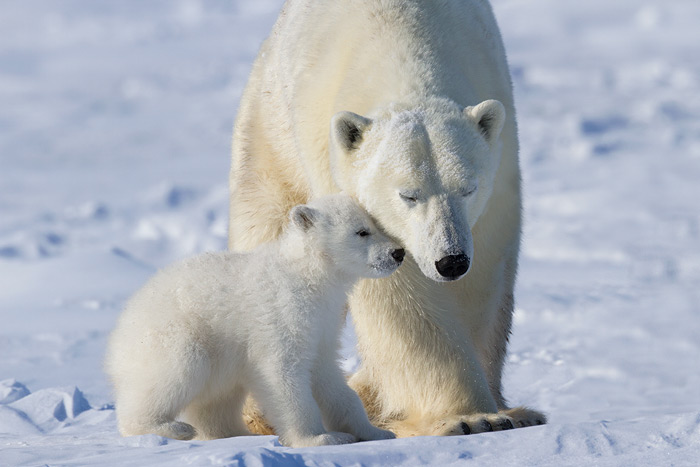
Location and weather conditions seem to be a crucial aspect of a successful photograph. How do you handle these unpredictable factors?
I dress for the weather and do the best that I can with what I have. A shivering photographer probably isn’t going to take the best images.
What would you say your most remarkable wildlife encounter has been?
There have certainly been many. And of course, I can still remember my first polar bear moms and cubs, my first orca breaching, my first leopard. Those are all pretty special. One of our most special though was in South Africa some years back. We saw a leopard cub and mom under some brush. They were really well hidden so everyone else went for lunch. Our guide started the engine and I politely, but sternly told him that “lunch can wait” or we can eat supper later that evening. I didn’t fly halfway around the world to eat when a four-month-old leopard cub and his mom were lazing around in the brush. After the other vehicles left, some elephants came through and scared the little leopard. He scampered about seven feet up a tree then fell asleep on a big branch. We spent the next 3-4 hours watching him in the tree. After his nap, he woke up and stared at us with his big brown eyes. He seemed to be quite taken by us as we were with him. And there wasn’t another vehicle around. It was truly a wonderful experience. By the time the other groups were finished with their lunches and came back at 3:30 p.m, he had caught his second wind. He and his mom took off and we never saw him again.
MOTIVATION
I just want to do my best with what I have at the time, then do better next time.
What is your favorite part of heading out to a new location?
I think the anticipation. It’s exciting.
Share with us your favorite image and why.
I have a lot of “favourite” images. I don’t think I can narrow it down to one. Some are technically better than others. Some I love because of the quality of the sighting and how I felt when I was at the scene. I think one of my favourites is an image of two Camargue horses sparring. The horses are not wild and the photo shoot is set up so I can’t say it is a favourite because as a wildlife photographer, there is nothing “wildlife” about that except for the flamingos far in the background. I think that image though is a nice technical image.

Do you have any tips for new photographers who want to take better wildlife photographs?
Always shoot in RAW or RAW and jpeg. If you take a once in a lifetime image, you will want that RAW image. Even if you can’t edit it properly. That’s okay, you can hire someone to edit it for you. Just make sure you have that RAW file!
The next biggest mistake new photographers make is not using a high enough speed in their camera settings. This is especially true if they are not using a pro-series lens with image stabilization in either the camera or the lens. If you aren’t using a pro-series lens and you are zoomed out to 400mm to photograph an animal, you will need to double your speed (800mm) to ensure the image has the best opportunity to be sharp. Then if it is running, you will need to up the speed again to 1200 or even more. Many beginning photographers will have the speed at 1/200’s and wonder why their image is soft.
And if you have the money to go on a big safari trip to Africa or someplace else expensive and your images are important to you, I would recommend spending the money and getting a great camera with great low light capabilities. And if you can’t afford to buy the camera and lens, then buy the camera and rent the lens. Buy the lens for the next big trip. A camera that can handle low light with an image-stabilized lens and a bare minimum of 400-600mm of reach is a really good start!
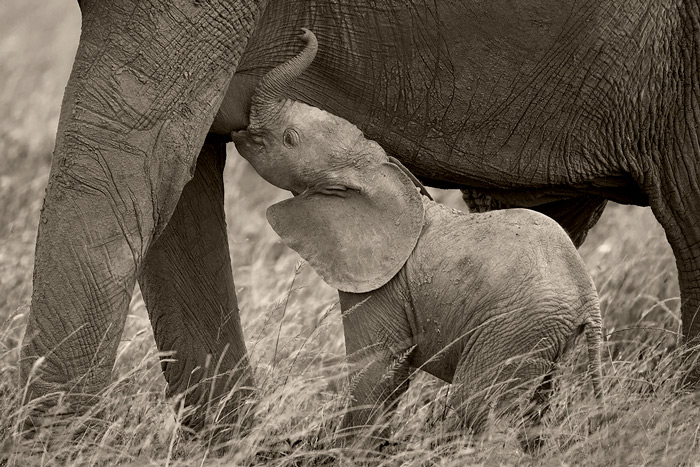
EQUIPMENT & EDITING
What type of camera(s) do you shoot with? What is your favorite lens?
In Africa, I shoot with a Canon 1Dx and a 200-400mm lens and a Canon 7D II and an 800mm lens. I also have a point and shoot for those occasions when I don’t want to or have time to take out a big camera rig. Even my point and shoot, shoots RAW.
What is in your camera bag?
The already mentioned cameras and lenses, a fisheye lens, a wide-angle, if my wife is with me I will have room to bring a 100-400 which is more “handheld friendly.” I take a go pro for fun, a clamp and a uniqball head, and a ton of other little items that make life easier on safari or protective gear during game drives, etc.
What is your favorite photography accessory?
That’s hard to say. I suppose my laptop. I spent a fortune on it so I would be able to download files quickly. It is frustrating when you are in your tent for hours after game drives while everyone else is having fun. Another bonus is not having to wait around when editing with layers.
What piece of equipment would you most like to get but don’t have yet?
A canon 5D-4 or Canon 1Dx II. I need one more body that handles low light really well.
How important is Photoshop or other image editing software in your final images?
Photoshop is important to me of course. I really dislike fake looking images that are either oversaturated or over HDR’d to death so the HDR makes the image look crunchy. I think giving an image a little bit of “punch” is important so the image stands out and looks amazing. The line comes if people can tell that your image has been edited. If someone says, “Wow, great Photoshop” that is about the worst comment I could imagine. I prefer just small subtle edits that make the image jump out at you, but not enough so the adjustments are obvious.
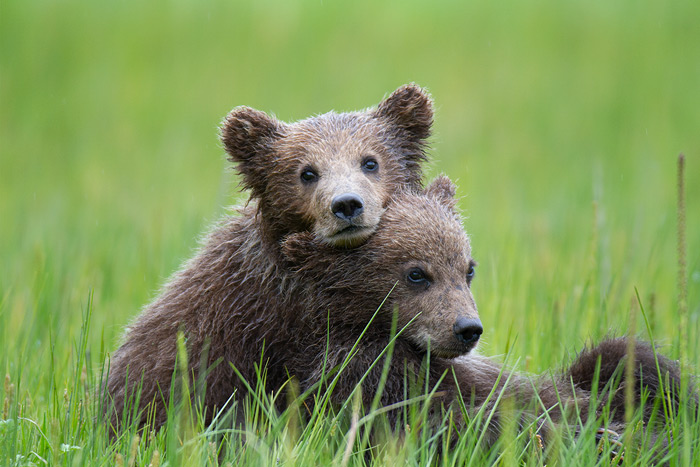
SUCCESSES & FAILURES
Was there a point in your journey when you started to feel really good about your work? If so, what did it feel like to get past that “tipping point?”
I’ll let you know when I get there. I have a long way to go yet before I am really comfortable in my own photography skin. It is coming, but I’m certainly not there yet.
Do you have any projects that make you look back and shake your head? What made the experience so unpleasant?
Yes, but it was the best that I could do at the time based on my ability with the knowledge/education or the tools/technology at my disposal at the time. Because of that, I am not ashamed at any point as I think I can honestly say I was always doing the very best that I could do at that point.
FUTURE PLANS
What are your upcoming travel plans?
I am leading three wildlife courses this summer. I’m hosting a group in Minnesota and two groups in Kenya in the next six months. Every trip I lead prepares me more for future trips helps me to teach others how to be better photographers and in teaching, I learn how to be a better photographer myself. For me to truly improve my photography skills, I believe the most effective way to improve my skills is threefold.
1.) To teach others how to become better photographers.
2.) To associate with photographers who are about at the same level I am at. There’s a small group of us that travel together yearly. We only see one another once a year. Between us, we share a lot of photography tips and tricks, gear, software, and techniques, etc. This really helps us all to learn from one another.
3.)Learning from photographers more advanced than I am. Even if I don’t know many photographers who are at the absolute top of their game, paying attention to what tools and techniques they are using and analyzing their finished product helps me to improve my photography. And some of the top pros may not even be as good a photographer as my friends and me. In many cases, our top images are as good or better than theirs. And in some cases, obviously better, but marketing is part of the job so if my images are better, but I get 20 people a day looking at my images, and their images aren’t as nice, but they have 1000 different people a day looking at their images, well there is a lot that I need to learn from that person.
What do you think the future holds for you? Where do you see yourself in the next few years?
I intend to continue hosting people on safaris, to expand the places that I take people on safari and to continue learning to be a better wildlife photographer and host.
Leave a Reply